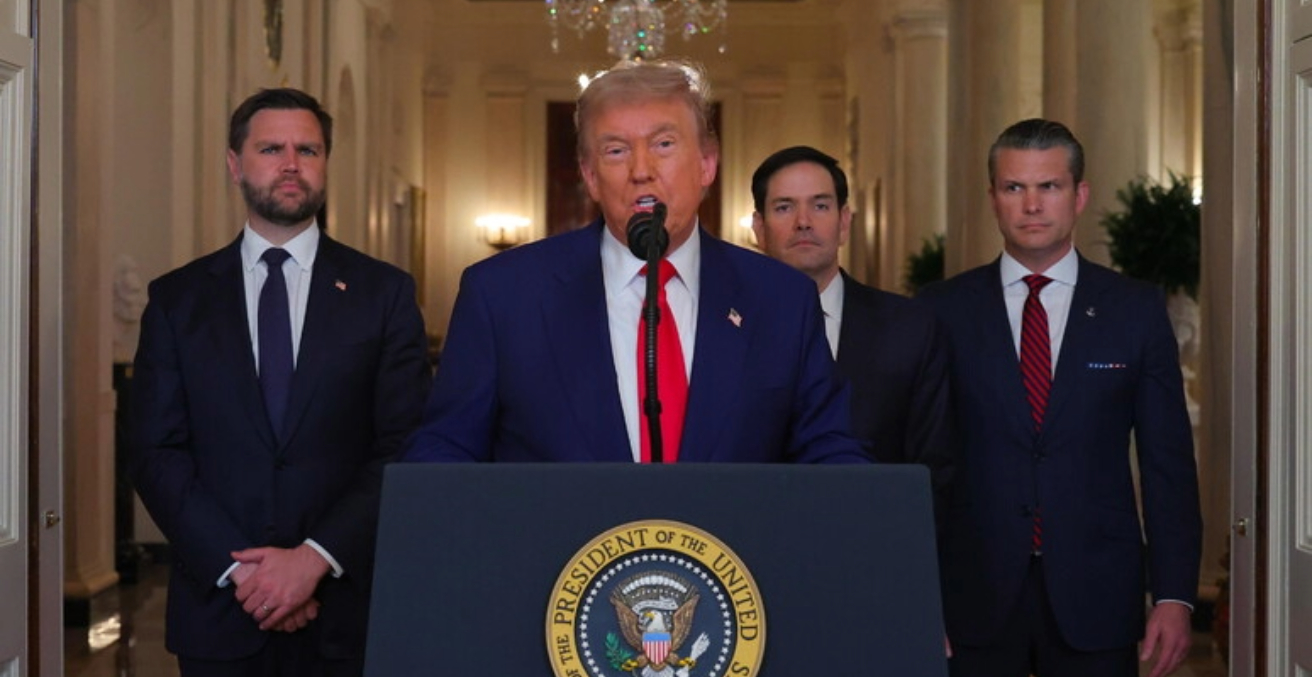Australia’s approach to international relations is defined by support for a rules-based global order. After Glasgow, it’s time to reconsider Australia’s national interests in the context of a world shifting toward net-zero emissions.
Australia relies on multilateral rules that constrain major powers from imposing their will on others. Collectively agreed rules are crucial in areas like trade, with the World Trade Organisation helping to maintain an open trading system; in the management of the maritime commons, with the UN Convention on the Law of the Sea assuring freedom of navigation; and in limiting the spread of nuclear weapons, such as through the UN Non-Proliferation Treaty.
The UN climate regime is an integral part of the contemporary rules-based order, and all nations have a stake in tackling greenhouse gas emissions. Despite this, Australia’s government is resisting strengthening multilateral rules to reduce greenhouse gas emissions.
At the 2021 United Nations Climate Change Conference (COP26), Australia joined more than 190 countries to endorse the Glasgow Climate Pact. But while the ink was still drying, the federal government said it would not abide by the terms of the deal. Prime Minister Scott Morrison suggested the Pact’s provision calling for countries like Australia to set a new 2030 target to cut emissions could be safely ignored. Foreign Minister Marise Payne explained that “Australia’s 2030 target is fixed,” while Energy Minister Angus Taylor said strengthening it “wouldn’t be in Australia’s national interests.”
This approach to international obligations to address climate change undermines Australia’s commitment to the rules-based order, which has consequences for Australia’s international relations. After Glasgow, it’s time to reconsider Australia’s national interests in the context of a world shifting toward net-zero emissions.
A Long Road: Australia’s Approach to Multilateral Cooperation on Climate
When a scientific consensus on climate change emerged in the 1980s, Australia positioned itself as a leader in multilateral discussions, and supported ambitious targets to cut emissions. In 1989, Foreign Minister Gareth Evans described it as “the biggest problem, the biggest challenge, faced by mankind in this or any other age.”
However, by the mid-1990s under the influence of a powerful fossil fuel lobby, the government decided taking serious action on climate change was not in Australia’s interests. The argument then, as it is now, was that Australia is a fossil fuel-dependent economy and that reducing emissions would cost Australia relatively more than it would other states.
A brutal assessment was made: rather than promote climate action, Australia would do what it could to minimise obligations to reduce emissions, while expanding coal and gas exports. This assessment has guided Australia’s approach to UN climate talks ever since.
When the Kyoto Protocol was negotiated in 1997, Australia demanded concessions allowing it to increase emissions while most developed nations cut theirs. Australia also held up consensus to demand concessions – that allowed emissions from land clearing to be included in the calculation of the base year (1990) when measuring its Kyoto target. Australia then used these concessions to claim it was “meeting and beating” its international obligations, while national emissions from burning fossil fuels rose significantly. When a successor to the Kyoto Protocol was negotiated in Paris in 2015, Australia set a target that was among the weakest in the developed world – to cut emissions by 26-28 percent by 2030, from 2005 levels.
The Paris Agreement contains a “ratchet mechanism” requiring countries to set new, stronger emissions targets every five years. This is why the Glasgow summit was so important. Coming five years after Paris (with a one-year delay due to COVID-19), it was a test of global cooperation to cut emissions. Australia again tried to minimise its obligations, and was the only developed country that did not set a new, stronger 2030 target. By contrast, the G7 countries pledged to collectively halve their emissions by 2030. This decade, the UK plans to cut emissions by 68 percent below 1990 levels, and the US will cut emissions by 50-52 percent below 2005 levels.
National targets brought to Paris, and strengthened in Glasgow, still leave the world on track for catastrophic warming. Much stronger cuts are needed this decade — the 2030s and 2040s will be too late. Acknowledging the world can’t wait until 2025 for new targets, the Glasgow Climate Pact brought the Paris “ratchet mechanism” forward, requesting another round of national climate plans with new 2030 targets be set out next year. Already, the Australian government has said it won’t be revisiting its 2030 target.
Climate Policy and Australia’s International Relations
Australia now finds itself among a small and isolated group of countries – including Saudi Arabia and Russia – resisting more ambitious global action to cut emissions. Australia’s traditional allies are committing to more ambitious climate action over the next decade. They are investing in green infrastructure and industrial policy, and using regulatory frameworks to encourage a shift away from fossil fuels. They are also promoting a rapid expansion of renewable energy, and encouraging the shift to electric vehicles.
Australia is being urged to join its allies. This year, the US formally put climate change “at the centre of US foreign policy and national security.” Australia’s ambassador to Washington, Arthur Sinodinos, says the US wants Australia to commit to stronger targets to help put pressure on China to do its part. Morrison informed cabinet that Australia would, somewhat reluctantly, shift to net-zero emissions by 2050 because climate change action had become a key pillar of the Western alliance.
Australia’s neighbours have also been clear that they expect Australia to do more. Maintaining a position as the security partner of choice for Pacific Island countries is important for Australia’s own strategic interests, and as part of Australia’s contribution to the ANZUS alliance. Pacific island leaders are clear they see climate change as their key security challenge, and reluctance to embrace stronger climate action has undermined Australia’s recent Pacific Step Up.
Revisiting Australia’s National Interests in a World Moving Toward Net-Zero
Being among the last nations to close the door on fossil fuels is no longer in Australia’s national interests, if it ever was. Morrison likes to say that Australia will export coal for as long as there is a market for it. But this approach leaves Australia ill-prepared for the opportunities and challenges of the inevitable global transition to net-zero emissions.
Since the 2015 Paris Agreement, momentum toward a net-zero emissions global economy has surged. In the past two years alone, more than 100 countries have pledged to achieve net-zero emissions by mid-century. More than 75 percent of the global economy has effectively set a deadline for the use of fossil fuels.
These commitments act as a market signal, redirecting global investment toward the clean energy economy of tomorrow. Australia’s prospects are shaped by these trends. Around the world, new wind and solar projects are now cheaper than coal and gas. Australia’s export markets are changing fast. As growing economies in Asia meet their climate targets, they will no longer want to buy coal and gas. Instead, they’ll want renewable energy – delivered directly via undersea cable or stored as green hydrogen. They will still want Australian iron ore, but increasingly they will want “green steel” made using hydrogen instead of coking coal.
Skyrocketing demand for batteries, electric vehicles, and renewable energy technologies will drive Australian exports of critical minerals – including lithium, cobalt, and rare earths. The International Monetary Fund estimates these minerals will be worth A$17.6 trillion over the next two decades. Managing Australia’s transition toward a post-carbon economy will be challenging, but there is little choice. With the right policy settings, Australia could grow a clean export mix worth A$333 billion annually, almost triple the value of existing fossil fuel exports.
US special envoy for climate John Kerry says the Paris Agreement “built the arena, Glasgow starts the race.” Commitments made at COP26 have sparked a global race toward net-zero. Australia’s interests are tied to leading that race, not coming last. Australia is behind, but has the potential to catch up. The first step is to set a 2030 target that at least matches key allies. Australia can halve emissions this decade – and it is in the national interests to do so. It would also reaffirm Australia’s support for a rules-based global order.
This article was originally published on 19 November 2021.
Dr Wesley Morgan is an Adjunct Research Fellow with the Griffith Asia Institute.
This article is published under a Creative Commons License and may be republished with attribution.




